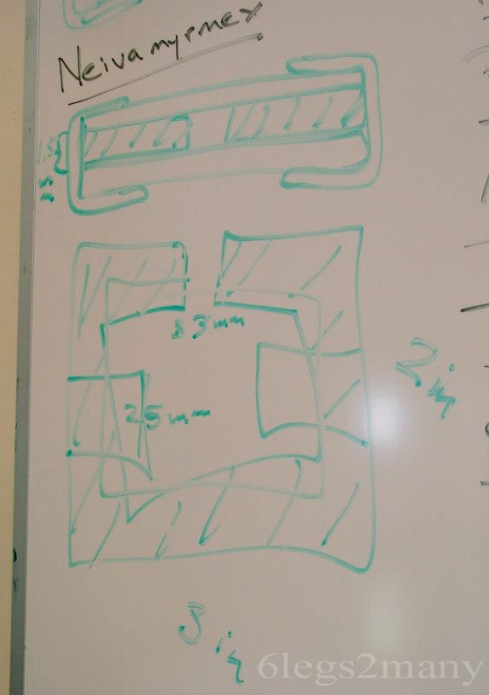Since my “How to Build Your Own Formicarium” page is one of my most visited articles, I thought I’d share some pictures (and occasionally brief directions) that might provide some inspiration for other ways to rear your ants.
Essentially this page is “How to Build a Bunch of Different Formicaria” sans most of the building directions. (But I’m happy to field questions.)
Most of these pictures were taken from setups demonstrated at the Ants of the Southwest course, and the rest are my own. Please enjoy!

The go-to method for rearing ant queens which practice claustral founding is to place them in a nest tube like this. The base of the tube is filled with water and plugged with a cotton ball to create a humid environment.

Probably the simplest ant colony design–a tube nest in a petri dish. The tube is held in place with clay to keep it from rolling.

Monomorium ants with a tube nest. Cotton and a straw has been used to make a smaller entrance for these tiny ants.

Carpenter ants in a stacked colony design with tubes connecting the levels. One of the levels contains a plaster floor and is darkened with red tape.

Holes for tubes were melted with a soldering iron, and tubes were connected via microcentrifuge tubes hot glued into place with the ends cut off. Holes can be capped if tubes are rearranged.

Rover ants in a flat plaster nest ant colony. Tupperware tub is lined with fluon. The petri dish covers set into the plaster and can be lifted out if needed.

Tunnel designs can be layed out with modeling clay or hot glue. (The hot glue might not come back off, though!)

Line a container with fluon, then pour plaster into the bottom. Press in your petri dish nest mold and a watering tube.

Dr. Ana Dornhaus creates nests for acorn ants (Temnothorax) using a square border of cardboard taped between two glass slides.
See also:








hiya,
i was just wondering how you keep the plaster nest from growing mould, as i have made a one myself and the plaster after a while starts to grow mould on it 😦 clearly from using water to hydrate the nest….
any ideas??
many thanks
mark
Well… there’s a lot of discussion about this in the comments over here, along with some good suggestions, but the short answer is that with plaster there’s really no sure solution to this issue.
Have you tried Ytong build nests?